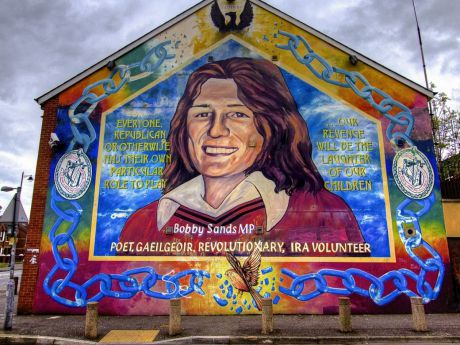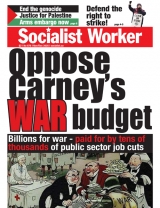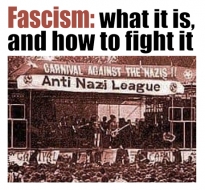Features
You are here
Celebrating Ireland’s Revolutionary History

May 4, 2021
The rich have worked hard for over a hundred years to control the narrative around the people’s rising that took place during Easter week in Ireland in 1916, and more recently to diminish the importance of the fight back by the hunger strikers forty years ago near Belfast, led by Bobby Sands who died May 5, 1981. Just as they’ve tried to control the news, history, etc. in every country they’ve colonised around the world.
Focusing now on these two moments in time it is important look back and to see what the working class people accomplished in those periods. We challenge the narrative that the rising and the hunger strikes were led by martyrs, who knew they were going to sacrifice themselves for the cause. The people who led these fight backs didn’t plan to die as a tactic – that storyline oversimplifies their years of hard work and well-thought strategies.
The leaders of these struggles were killed or left to die quite consciously by the wealthy, capitalist, imperialist classes they were fighting against to make a better, socialist world. Their deaths are best honoured by acknowledging what they did - not enshrined in sanctimony.
The Easter Rising in Ireland in 1916, in the words of Kieran Allen, “may be better understood as giving birth to… a revolutionary tradition that has passed like a thread through subsequent decades”. What happened then shows us a rough outline of the path ahead for our work to bring about a socialist world.
The Easter Rising
In Ireland, in 1916, during Easter week, Irish Republican people led a rising and rebellion against British Rule in Ireland. Organized by seven leaders of the Military Council of the Irish Republican Brotherhood - joined by members of the Irish Volunteers, the Irish Citizen Army and hundreds of women of Cumann na mBan - 1,250 people seized important buildings in Dublin and installed the Irish Republic, strategically, with two to three thousand additional volunteers stationed elsewhere.
Many challenges to the establishment were underway already in the lead up to the Rising. The country was largely controlled by the Irish Parliamentary Party and its leader, John Redmond, who favoured land owners and wanted constitutional nationalism and Home Rule. They pushed Irish involvement in the first World War (1914 to 1918) to gain favour and win Home Rule for Ireland from the British Parliament. This set of politics sent 3,500 Irishmen to their deaths in the war, and alienated the working and ‘lower’ classes living in cities. Jim Larkin’s paper - the Irish Worker, had a circulation of 20,000 a week around 1913 and repeatedly condemned the party for ignoring the material welfare of workers. There were strikes and civil unrest and people were largely unemployed, hungry and discontent.
The Rising, being organized while the British Empire was at war, drew people to republicanism. The threat of conscription of the people of Ireland into the British Army was a major catalyst. “Choosing” to be a soldier meant wages and food on the table for families who could subsist on a “Separation Allowance” and an escape from poverty and boredom, to the excitement of going to the frontlines and defending Belgium, which was largely Catholic. But the threat of conscription was a removal of choice and it created further division.
The wealthy and the land owners – their rights protected by parliament and police - supported the war effort, and denounced the rebels during the rising. The people themselves were struggling to eke out a living, grappling with new political realities and deeply wanting bigger change and better conditions. Many of them were being won to the politics of Séamas Ó Conghaile (James Connolly) - the leader of the Irish Citizen Army and a Socialist - including Pádraig (Patrick) Pearse, a nationalist republican and leader of the Military Council. Connolly understood that religion was being used to create division, by capitalist and imperialist forces. He appealed to both Catholic and Protestant workers and worked to show how religious sectarianism divided workers. He made a bold appeal for a Socialist Ireland.
The leaders had planned ahead. They had worked to further socialist ideas and politics and had grown their numbers and their own military. They assessed circumstances evolving around them and knew the variables were many and that they could lose. But they saw a chance at freedom and determined they had a chance at winning.
The British state were taken by surprise but responded with force, sending over 16,000 troops, plus artillery and a gunboat . The Irish people kept them at bay for a week. In the end 116 British soldiers, 16 policemen and 318 rebels and civilians died and 3,500 people taken prisoner – 1,800 of those were sent to internment camps or prisons in Britain. Most leaders of the uprising were then executed.
Despite this, the struggle for freedom continued in Ireland – from 1918 to 1923 Ireland was in the throes of revolution and it shook the establishment. Five years after the Easter Rising - 100 years ago, on May 3rd, 1921 - the British partitioned Ireland, against the democratically voiced opposition of the people, leaving Dublin and Southern Ireland alone as its own Republic of 26 counties; and keeping six counties in the North as part of the UK. Parliament couldn’t afford to lose face by giving it all up, and they couldn’t politically afford to keep it all and provoke another uprising.
At this 100 year mark, the British state has set aside $3 million pounds to “celebrate” the anniversary of the partitioning. They tried to do the same thing in 2016 about the Rising, but had to pull their propaganda off the airways due to mass public outcry. Their arrogance knows no bounds.
Hunger Strikes
“I REFUSE to change to suit the people who oppress, torture and imprison me. I have the spirit of freedom which cannot be quenched by even the most horrendous treatment."
Roibeárd Ó Seachnasaigh (Bobby Sands)
We are marking 40 years since the hunger strikes against continued British oppression of the Irish people. In 1971, an internment camp – Long Kesh – was set up 14 kms south of Belfast, to detain people suspected of having paramilitary connections. They were accurately considered political prisoners and granted “special category status” with certain rights.
In 1975 the Labour government removed special status, effectively criminalizing the prisoners. By 1980, after many varying protests, the men organized a hunger strike and then ended it once the Tory government promised to return the status and rights. Three months later the Tories reneged and in 1981 the men began a new hunger strike, demanding the same five rights, to: not wear a prison uniform or do prison work; free association with other prisoners; organize educational and recreational pursuits; one visit, one letter and one parcel per week; and full restoration of remission lost through the protest.
The second hunger strike ended only after the British parliament, under Thatcher, allowed ten men to die. The first to die was leader and socialist revolutionary, Bobby Sands. Bobby was a working class Catholic with many Protestant friends in his very young years. Religious sectarianism whipped up by the Orange Order created the divide it was meant to; Bobby and his family witnessed and were subjected to near constant Protestant bullying and oppression. On two separate occasions his family – as many Catholic families experienced – were terrorized out of their homes in a majorly Protestant neighbourhood. Like Bernadette Devlin McAliskey, he recognized the struggle, inequality and lack that defines working class life under capitalist and imperialist conditions and became a socialist because of it.
Many strategies and tactics were used to fight back against criminalization first, with the hunger strike used as a last resort in effort to maintain their spirit and not give in to British rule. During the strike to keep spirits up at night, the prisoners sang songs and told stories to their comrades – one of which ran for eight nights while Bobby re-told Leon Uris’ Trinity, from memory. He read Marx and other revolutionary socialists writings, like James Connolly. Bobby was elected an MP before his death, embarrassing the Tories. Over 100,000 people attended his funeral.
The successes of this particular fight were the multiple, mass mobilizations and Union-led strikes that took place in solidarity, extensively in Ireland but some as far away as the dock of the Longshoremen’s Union in New York, who boycotted British ships, as well as protests outside British embassies around the world. They had showed that the IRA had popular support, they had undermined and rattled the Tories, who were forced to concede the strikers’ demands.
Today
Our governments actively, forcibly use ‘our’ courts and police to suppress Union activity; First Nations fight backs to protect their land or livelihoods from theft, development, pipelines, pollution; Black Lives Matter activists. They allow attacks on Muslim people and wilfully ignore hate speech and actions from neo-Nazis. While people suffer and die waiting for vaccines, and go jobless, hungry and homeless, the Federal government plans to spend $60 to 80 Billion dollars on war ships. Things are not so different from the times leading up to the Rising.
But, we know how to organize and strategize and we can read Irish history written by people like Hazel Croft, Kieran Allen, Bernadette Devlin McAliskey, Bobby Sands, Eamonn McCann and James Connolly and learn lessons for the fights today.
Section:










